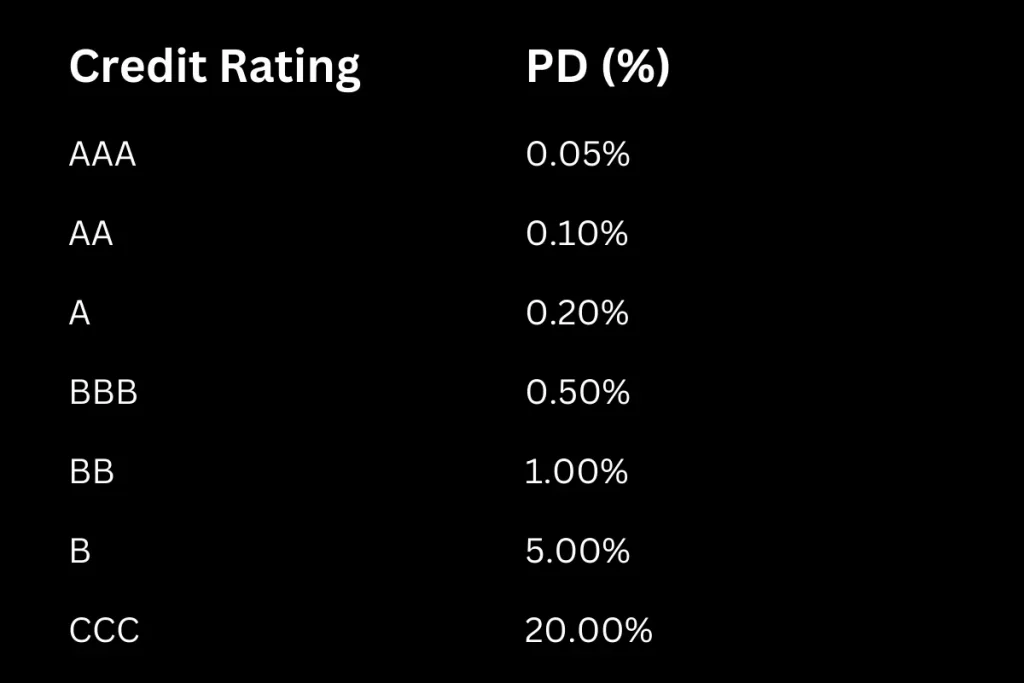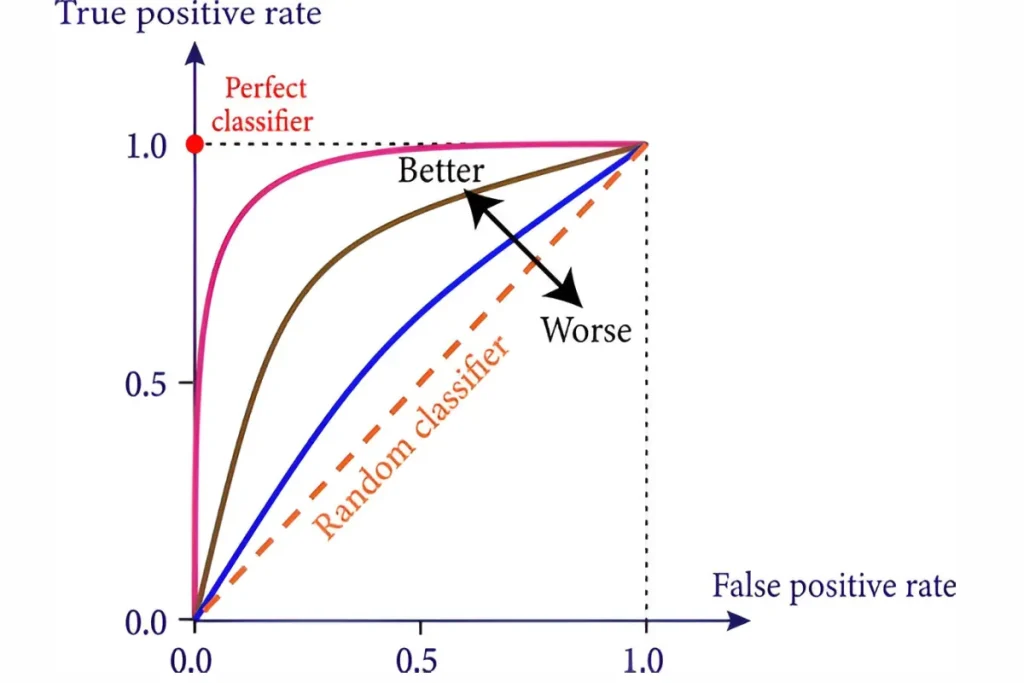Understanding Probability of Default (PD) | Definition, Formula, and Impact
Credit risk management is challenging. Borrowers and lenders often struggle with understanding the risk of loan defaults. This confusion can lead to poor financial decisions and increased risks.
Learning about the Probability of Default (PD) can help. Borrowers and lenders can make better decisions by understanding how to calculate PD. This knowledge is crucial for effective credit risk management and financial stability.
Understanding the Probability of Default

Definition of PD
The PD is the likelihood that a borrower will default on their loan. Default means the borrower fails to meet the obligations of the loan agreement. This measure is crucial for lenders to assess the risk associated with lending money.
The probability of default definition finance refers to the failure of a borrower to meet the terms of their loan agreement, resulting in a default event.
Stressed and Unstressed PD
Stressed PD considers extreme economic conditions. It shows how likely a borrower is to default during tough times.
Unstressed PD looks at normal economic conditions. Both metrics help in understanding a borrower’s credit risk.
Through-the-Cycle (TTC) and Point-in-Time (PIT) PDs
TTC PD estimates the default probability over an entire economic cycle. It smooths out the effects of economic fluctuations.
PIT PD measures the default probability at a specific point in time. This metric can be more volatile but reflects current economic conditions.
Calculating PD
Mathematical Meaning and Formulas
The PD is calculated using different formulas. These formulas help determine the likelihood of a borrower defaulting on a loan.
One common method is the Merton Model. The formula for the Merton Model is:

Where d2 is defined as:

PD=N(−ln(V/A)+(r−(σ^(2))/2)t/σt)
Another approach is using logistic regression. The formula for logistic regression is:

PD=1/1+e^{−(β0+β1X1+β2X2+…+βnXn)}
Estimation Techniques
There are various techniques to estimate PD. These include historical data analysis and statistical models. Machine learning models are also becoming popular for PD estimation.
|
Method |
Description |
|
Historical Data Analysis |
Uses past data to predict future defaults |
|
Statistical Models |
Employs mathematical methods to estimate PD |
|
Machine Learning Models |
Utilize algorithms to predict default probability |
Structural Models (e.g., Merton Model)
Structural models use company asset values to estimate PD. A default occurs when the value of a company’s assets falls below a certain level. These models incorporate risk-neutral probabilities to predict PD.
Reduced-Form Models
Reduced-form models focus on the timing of defaults. Reduced-form models use market data and credit benchmark indicators to estimate the likelihood of default.
Machine Learning Models
Machine learning models analyze large datasets to predict PD. These models can handle complex relationships between variables and improve accuracy. Accurate data is critical for PD estimation, similar to how precision is vital in understanding the color codes of fiber optics.
Factors Influencing PD
Borrower-Specific Factors

Several borrower-specific factors influence the Probability of Default (PD). These include the borrower’s credit history and current debt levels. Income stability and employment status are also critical.
Financial behavior like spending and saving habits. This plays a role too. The state of a borrower’s PD account can influence their likelihood of default.
|
Factor |
Description |
|
Credit History |
Record of past borrowing and repayments |
|
Current Debt Levels |
Amount of existing debt |
|
Income Stability |
Consistency of the borrower’s income |
|
Employment Status |
Job security and type of employment |
|
Financial Behavior |
Spending and saving habits |
Loan-Specific Factors
Loan-specific factors include the loan amount and interest rate. The loan term also affects PD. The purpose of the loan and the collateral provided are important too.
Understanding the level of effort (LOE) required for evaluating loan-specific factors, such as credit history and income stability, can assist lenders in better assessing a borrower’s risk and creditworthiness.
External Economic Factors
Economic conditions, like inflation and unemployment rates, influence PD. Economic downturns can increase default risks. Economic conditions, like currency fluctuations in countries such as Saudi Arabia, influence the Probability of Default (PD)
High-Yield vs. Low-Yield Debt
High-yield debt carries a higher risk of default. Low-yield debt is generally safer. Understanding the yield helps assess default risk. High ticket sales often involve higher risks, similar to high-yield debt
PD in the Context of Credit Risk

Exposure at Default (EAD)
Exposure at Default (EAD) is the total value a lender is exposed to when a borrower defaults. It includes the loan amount and any accrued interest. EAD calculation is crucial for expected losses.
Just as a forklift helps move heavy objects in a warehouse, accurately assessing the Exposure at Default (EAD) ensures lenders can properly evaluate the risk of loan defaults in various financial scenarios.
Loss Given Default (LGD)
Loss Given Default (LGD) represents the portion of the loan that is lost if a borrower defaults. It is expressed as a percentage of the EAD. LGD considers recoveries from collateral or other sources.
Importance of probability of default by Credit Ratings and Credit Scores

Credit ratings and scores help assess the creditworthiness of borrowers. Higher PD ratings indicate lower default risk. Rating agencies provide these assessments based on various factors.
|
Credit Rating |
PD (%) |
|
AAA |
0.05% |
|
AA |
0.10% |
|
A |
0.20% |
|
BBB |
0.50% |
|
BB |
1.00% |
|
B |
5.00% |
|
CCC |
20.00% |
Altman Z-Score
The Altman Z-Score is a financial formula used to predict the likelihood of bankruptcy. It combines five financial ratios to assess a company’s financial health. The formula is:

Z=1.2×AB+1.4×CD+3.3×EF+0.6×G+1.0×H
Applications of PD
Assessing Creditworthiness
Probability of Default (PD) is essential in assessing a borrower’s creditworthiness. Lenders use PD to evaluate the lending risk to an individual or business. A lower PD indicates a lower risk of default. It makes the borrower more creditworthy.
Pricing Credit Products
PD is also used in pricing credit products. Lenders adjust interest rates based on the default risk. Higher PD usually leads to higher interest rates to compensate for the increased risk.
Trading Bonds and Credit Derivatives
Investors use PD to assess the risk of bonds and credit derivatives. PD helps determine the likelihood of a bond issuer defaulting. This information is critical for making investment decisions.
Credit Default Swaps (CDS)
Credit Default Swaps (CDS) are financial instruments that protect against default risk. PD is used to price CDS contracts. A higher PD means higher premiums for CDS protection.
Market vs. Individual PD
Market PD assesses the default risk of entire markets or sectors. Individual PD focuses on specific borrowers. Both types are important for comprehensive risk analysis.
Real-World Examples and Case Studies
Market vs Individual PD
Market PD assesses the default risk premium across entire markets or sectors. It helps investors understand the broader economic risk.
Individual PD focuses on specific borrowers or entities. This distinction is crucial for tailored risk assessment.
Examples and Case Studies
In the 2008 financial crisis, high PDs among subprime mortgage borrowers led to widespread defaults. This caused significant losses for financial institutions.
Another example is the collapse of Lehman Brothers. Here poor PD assessment contributed to its downfall.
Challenges in Finding PD
One major challenge is data availability and quality. Accurate PD estimation requires extensive historical data. However, obtaining reliable data can be difficult.
Another challenge is model validation and accuracy. Ensuring that PD models are accurate and reliable is essential for effective risk management.
Practical Implementation and Insights
Business Problem and Solution Value
What does PD meaning in business? Understanding the Probability of Default (PD) helps solve various business problems. It allows lenders to evaluate the risk associated with lending. This understanding can lead to better decision-making. This reduces financial losses. Continuing Professional Education (CPE) is essential for risk managers to stay updated on PD models and risk management strategies.
ROI Estimation
Estimating the Return on Investment (ROI) is crucial when implementing PD models. Accurate PD predictions can improve loan performance and profitability. Businesses can achieve better ROI by managing risk effectively.
Working with Data
Data is vital for calculating PD. Collecting and cleaning data ensures accurate predictions. Historical loan data, economic indicators, and borrower information are essential inputs. Here is the table.
|
Feature |
Description |
|
Credit History |
Past borrowing and repayment record |
|
Current Debt Levels |
Existing debt obligations |
|
Income Stability |
Consistency of borrower’s income |
|
Employment Status |
Job security and type of employment |
|
Loan Amount |
The principal amount of the loan |
|
Interest Rate |
Cost of borrowing |
|
Loan Term |
Duration of the loan |
Modeling and Insights
Building PD models involves statistical and machine-learning techniques. These models provide insights into default risk. Regular updates and validations ensure their accuracy and reliability.
Interpret Results

Interpreting model results is crucial. Visual aids like Lift Charts and ROC Curves help in understanding model performance. Accurate interpretation aids in making informed decisions.
Post-Processing and Deployment
Post-processing involves refining model predictions. Deploying PD models in real-time systems enhances decision-making. Continuous monitoring ensures models remain effective over time.
Decision Stakeholders
Multiple stakeholders are involved in PD model decisions. These include risk managers, data scientists, and financial analysts. Clear communication among stakeholders is essential for successful implementation.
|
Stakeholder |
Role |
|
Risk Manager |
Oversees risk assessment and management |
|
Data Scientist |
Develops and validates PD models |
|
Financial Analyst |
Analyzes financial data and provides insights |
|
IT Specialist |
Implements and maintains PD models in systems |
|
Compliance Officer |
Ensures regulatory requirements are met |
Model Monitoring and Implementation Considerations
Regular monitoring of PD models is necessary. This involves checking model accuracy and performance. Implementation considerations include system integration and compliance with regulations.
Implications of PD
Impact on Borrowers and Lenders
PD significantly affects both borrowers and lenders. A high PD can lead to higher interest rates and stricter lending terms for borrowers. This can make borrowing more expensive and difficult.
A high PD indicates a higher risk of default. This can result in financial losses for lenders.
Risk Management Strategies
Effective risk management strategies are crucial in handling PD. Lenders use PD models to assess risk and make informed lending decisions.
Strategies include diversifying loan portfolios and setting aside capital reserves. Regularly updating PD models ensures they remain accurate and reliable.
Regulatory Considerations
Regulatory bodies set guidelines for credit risk management. These regulations require lenders to maintain accurate PD models and risk assessments. For comprehensive guidelines and principles on managing credit risk, refer to the Bank for International Settlements (BIS) here.
Compliance with regulations helps maintain financial stability and protects both borrowers and lenders.
|
Regulatory Body |
Requirement |
|
Basel Committee |
Maintain accurate risk models |
|
Federal Reserve |
Regular stress testing of PD models |
|
European Central Bank |
Compliance with Credit Risk Regulations |
|
Financial Conduct Authority |
Ensure transparency in credit risk assessments |
Conclusion
Understanding the PD is vital for both borrowers and lenders. It helps in assessing creditworthiness, pricing credit products, and managing risk.
Calculating PD involves various models and techniques. Each of the models and techniques with its strengths and applications.
Factors influencing PD include borrower-specific, loan-specific, and economic factors. Using PD in credit risk management ensures better financial stability.
PD is a crucial concept in credit risk management. Understanding PD and effectively using PD help both borrowers and lenders.
Both borrowers and lenders can make informed decisions. This knowledge aids in risk management. It enhances financial outcomes. It also ensures regulatory compliance.
Frequently Asked Questions (FAQs)
What is LGD and PD?
LGD (Loss Given Default) measures the percentage of a loan lost if a borrower defaults, while PD(Probability of Default) estimates the likelihood that a borrower will default.
What is PD in banking terms?
PD in banking terms, refers to the likelihood that a borrower will be unable to meet debt obligations.
What is the difference between LGD and EAD?
LGD (Loss Given Default) measures the percentage of loss if a borrower defaults, whereas EAD (Exposure at Default) represents the total value exposed to loss at the time of default.
Why is it necessary to know about PD (Probability of Default)?
Knowing the PD helps banks assess credit risk, set appropriate interest rates, and determine capital requirements.
What is the difference between PD and credit score?
PD is a specific probability metric used by banks to assess default risk, whereas a credit score is a broader measure of creditworthiness used by lenders.
How does the Probability of Default impact borrowing costs?
A higher PD typically leads to higher borrowing costs due to increased risk, resulting in higher interest rates for the borrower.






